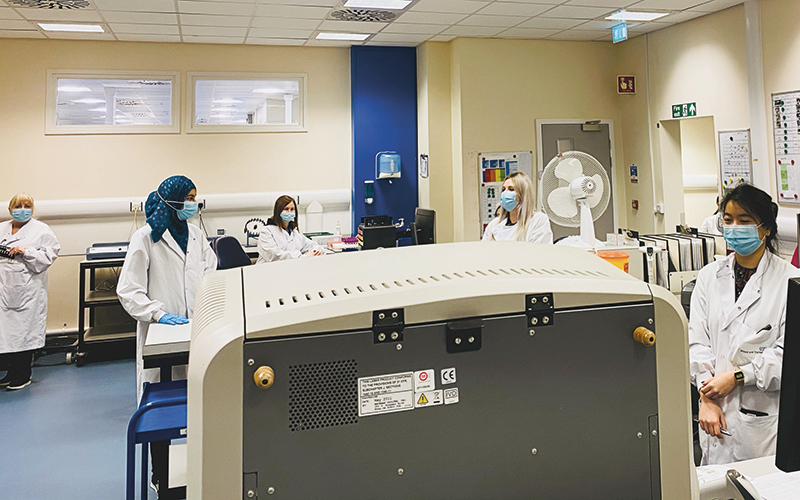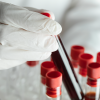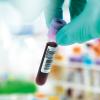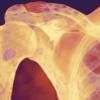Charlotte Felton, Senior Healthcare Technical Officer, gives a guided tour of the Manchester Blood Centre.

From the outside, the Manchester Blood Centre looks like an ordinary red brick building, however, once inside (and three badge swipes later) you will find a specialist donation laboratory – one of only two in the country. The testing department is a highly regulated, GMP-compliant laboratory that works to national and international standards and has a major role in ensuring the quality and safety of blood products that are supplied for patient use.
There are staff dedicated solely to quality monitoring, ensuring that blood products meet the required set analytes for compliance and safe transfusion practice, and the laboratory takes part in internal environmental monitoring in controlled and uncontrolled rooms, using contact, settle and swabbed plates, to name just a few, to monitor the cleanliness of areas important to the integrity of blood supply. Quality is underpinned in all processes and all staff are dedicated to the NHS Blood and Transplant core ethos – “caring, expert, quality” and are proud to be involved in an essential service.
When a blood donation session is underway, three EDTA blood samples are collected as standard from the donor, and sometimes a fourth sample when discretionary testing is required, this is dependent on the donor’s individual circumstances. Samples for testing can also be received from military donors, Arctic Survey samples and non-blood donors for tissues – these samples go on quite the journey through the various stages of testing in the department on receipt!
Mandatory testing is required as detailed in the Guidelines for Transfusion Services in the UK. This includes primary blood grouping (ABO, RhD, antibody screen and syphilis testing), which can provide confirmation of known donors to the service that is, of course, compared with historical computer records – Kell, C, c, E and e antigens are determined, whilst phenotyping for selected donations for Jka, Jkb, m, S, s and Cw can also be performed. Secondary grouping is also available using a slightly different panel than the first run. There is a requirement for some donations to be tested on a second, independent run, using technology that is capable of extended antibody screening for paediatrics, additional phenotyping and 1/10-1/50 antibody titres with the ability to test unresolved ABO and RhD from the primary grouping. Specific analysers are used to perform sickle (HbA/S) testing for paediatrics and selected ethnic donors. Transfusion microbiology involves primary and secondary testing for HBsAg, anti-HCV, anti-HIV 1+2 and HTLV using in vitro chemiluminescent immunoassay technology, in addition to PCR technology for HCV, HIV and HBV testing. Discretionary testing is performed on samples where there is an extra risk. There is a dedicated bacterial screening team who ensure that platelet products are free from harmful bacteria, reducing the chances of clinically adverse transfusion reactions significantly –safety is key here.
The year 2020 saw devastating effects due to the COVID-19 pandemic. Within NHS Blood and Transplant an initiative has been developed, looking into the use of convalescent plasma from donors who have recovered from COVID-19 but have high levels of antibodies against the virus – my role is largely based on testing the donated plasma to assess the level of antibodies. There are currently two large studies being conducted looking into the use of convalescent plasma, specifically whether it can decrease the mortality of patients and increase the chances of survival within the ICU setting. If the results are positive, the technology could be used in any setting across the world, so keep an eye out for the results.




